Double Height DDR4: 32GB Modules from G.Skill and ZADAK Reviewed
by Ian Cutress & Gavin Bonshor on January 23, 2019 9:00 AM ESTDouble Height DDR4 Conclusion
In this review we have tested the new 32 GB DDR4 modules from both G.Skill and Zadak. These modules are 'double the height' of traditional DDR4 memory, as they essentially use two modules worth of DRAM chips to achieve the double capacity. The modules do this through adjusting the pins on the DDR4 interface as if one memory slot were responsible for two memory sticks. This change means that these modules need to be qualified for motherboards on a per-motherboard basis. To that extent, at the time of the review, these modules are only validated on three ASUS ROG motherboards. These are enthusiast grade motherboards, to go along with enthusiast grade memory.
The benefit of these 32 GB DDR4 modules means that a motherboard with only two memory slots can achieve 64 GB of memory by using 2x32 GB, rather than the current limit of 2x16 GB. The penalty for using the memory comes in the form of physical space on the motherboard - the G.Skill kit we tested is substantially taller than its regular counterpart, while the Zadak kit we tested is marginally taller. In both circumstances, the manufacturers recommend that liquid cooling is used on the processor on the motherboard, given the difficulty that air coolers can have with tall memory.
On the modules we get a doubling of almost everything: there are 32 Samsung B-die chips on each module, leading to 32 GB of capacity per module. There is also double EPROMs, and when installed in the system, each module is seen as two. What we essentially have is the 'two DIMMs per channel' technique exploited by having two DIMMs on one PCB.
The purpose of this review was to examing the hardware, and test to see if there are any performance differences. Also, the presence of Samsung B-die gave us an interesting application - these high-performance chips are usually an overclockers' favorite, so we did a bit of overclocking as well. We also looked into power, which is likely to be a sticking point for these modules.
Performance
Performance across both the G.Skill and ZADAK kits was consistent in our bench suite, and on par with G.Skill's TridentZ RGB DDR4-3200 standard 2x16 GB kit. Before we started, one could have assumed that the double height memory would hinder performance due to its larger size longer traces from the ICs, EPROM and pins - however having a unified design actually seemed to benefit in a few of the scenarios.
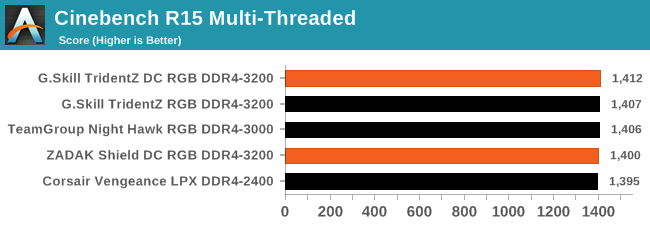
For power, we tested using Intel's Power Gadget tool, which has the hooks to test DDR4. The results show have two interesting scenarios. For power consumed per gigabyte, the new memory is fairly competitive:
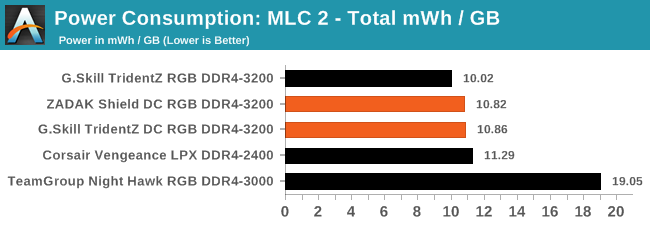
However, when we look at power per performance, in a benchmark where all the memory kits performed the same, then the value only comes from having the larger memory:
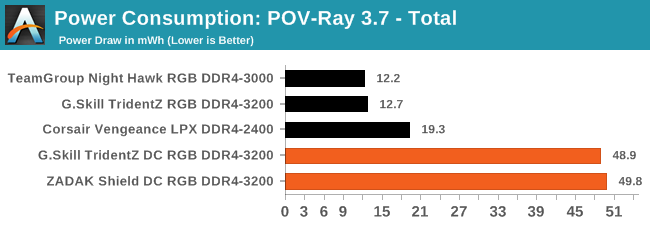
Compatibility
As mentioned, only three ASUS motherboards currently support this new double height DDR4 memory. It means these modules are going after a small market, or it will be up to system integrators to get the best deals for end-users when combining the right motherboard with the right memory. ASUS is keeping the details of how they enabled the new memory under wraps for now, likely seeing it as a competitive advantage in the aggressive motherboard market.
In the ASUS BIOSes, there's nothing much that gives them away, except that the BIOS shows that four memory slots are populated, despite the motherboard only having two available, confirming that each of these 32 GB memory modules are seen internally as 2x16GB modules.
Double Capacity, Double The Price
On the pricing front, this is down to the memory companies. G.Skill doesn't typically give official pricing for any of its kits, and the company states they like to be competitive per region on a weekly basis, which means they don't give 'global MSRPs' as they can change. The company did state however that the 2x32GB kits would be priced similar to its 4x16 GB kits. If this is right, the price for the G.Skill DC kits is expected to start from around $650 based on a 64 GB DDR4-3000 kit and closer to $1000 for DDR4-3200.
ZADAK unveiled its full MSRP pricing list to us. The baseline DDR4-2666 CL16 kit starts at $799, and the highest end DDR4-3600 kit finishes $1299.
Obviously, the benefits of the double height memory are focused on one key direction only: the need to have a total of 64 GB of memory in a particular form factor. Out of the three motherboards where this memory is actually qualified, only the Z390-I Gaming is a small form factor motherboard, so for users looking to optimize an SFF system, this would be the one to get. Larger systems rarely have this two memory slot limitation, and so the options for this memory are a lot larger, unless the user absolutely needs to use the Gene or the Apex motherboards from ASUS.


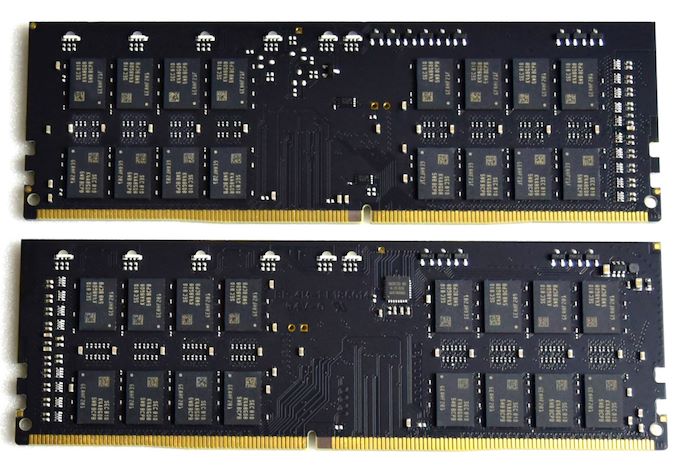
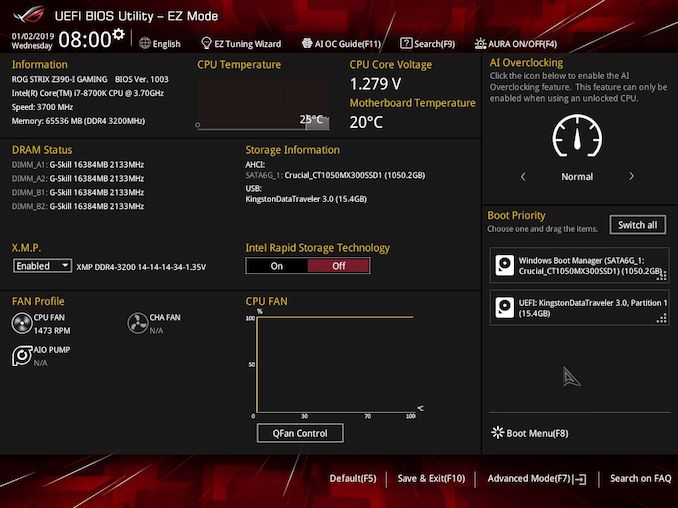
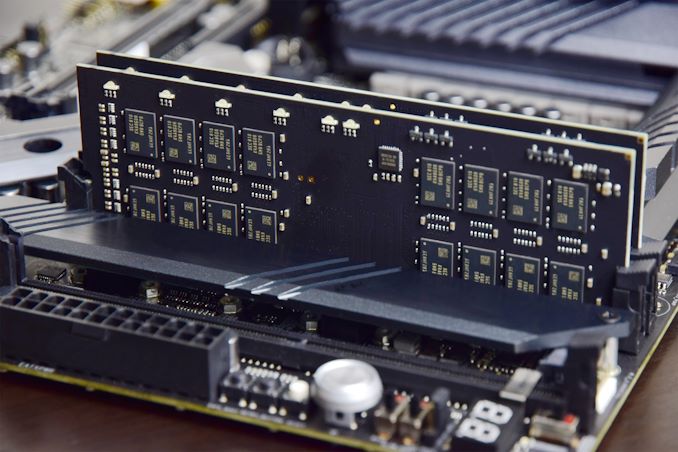








50 Comments
View All Comments
CheapSushi - Wednesday, January 23, 2019 - link
I honestly really love it aesthetically. It makes the rest of the motherboard balance out Z-height wise with PCIe cards. I know nobody else cares but there's something about it that I like. It's also an interesting solution; reminds me of early OCZ PCIe SSDs with dozens of chips on them. I would honestly love if these worked on quad and deca DIMM slot boards.SmCaudata - Wednesday, January 23, 2019 - link
I was pressed for time upon initial scanning and jumped to conclusion. Then I dug a bit deeper. In the conclusion you state that the G.Skill is substantially larger while the other only has a marginal height difference. This makes the ZADAK sound smaller, when in fact, the G. Skill double is actually the same size as the ZADAK single.G.Skill 45 mm height up to 60 for the double
ZADAK 60 mm height up to 73 for the double
Anyway. Based on percentage of size increases, yes, the G.Skill grew more, but you may want to consider some clarity in your description as there are a lot of people that just read the conclusion and may be concerned about size.
DanNeely - Wednesday, January 23, 2019 - link
I was confused too, because the ZADAK dimms looked significantly larger than the G.Skill.DigitalFreak - Wednesday, January 23, 2019 - link
This proprietary solution is pretty much DOA now that true 32GB DIMMs are supported by Intel on Z390 systems. All it needs is a BIOS update.nevcairiel - Wednesday, January 23, 2019 - link
Clearly the base technology would also scale up to using 16Gb dies for 64GB in one DIMM. The argument for small systems with only two slots still exists.The_Assimilator - Wednesday, January 23, 2019 - link
The number of people who want/need 64GB on a 2-DIMM-slot motherboard can be counted in the thousands, maybe. The number of people who want/need 128GB on a 2-slot motherboard can be counted on your fingers. This is a product without a market.yuhong - Wednesday, January 23, 2019 - link
The DDR4 spec only goes up to 16Gbit though.rocky12345 - Wednesday, January 23, 2019 - link
Great write up thank you.It also makes me see how much I need to upgrade my own system because I am still on DDR3@2200MHz with tight timings though but still I am sure this is holding me back a lot. My Aidia 64 latency score is like 42ns-43ns and I also thought that was fairly good and would help me get better responsiveness in my games and maybe it does. Like I said though my 2200MHz is probably really on the slow side when you think of DDR4@3200MHz and higher being able to push the systems so much harder.
Targon - Wednesday, January 23, 2019 - link
Why not test these on an AMD Ryzen based motherboard or two and see if they will work? Just because things are only officially supported on one platform or another doesn't always mean that they won't work. Also, Intel vs. AMD is very different in terms of memory support, and while it is more difficult to get DDR4 3633 and above working on the AM4 platform, if it works, it works. 3200 isn't a difficult speed at this point.Targon - Wednesday, January 23, 2019 - link
I disagree with the final paragraph where the focus is for SFF and motherboards with only two memory slots. If you have four memory slots and you can install 32GB in each slot, 128GB of RAM might be important for some people. What if you have a motherboard with more slots, if you really want/need the RAM and this stuff works, it doubles the allowed amount of RAM on the motherboard.The official specs for what a MOTHERBOARD supports are often limitations of the technology of the time. How many old machines said "Max 4GB RAM", because there were two slots, and at the time, you never saw 4GB memory modules. I've gone back to some of those old machines, and used 4GB modules to give 8GB of RAM in a machine that theoretically could only take 4GB.